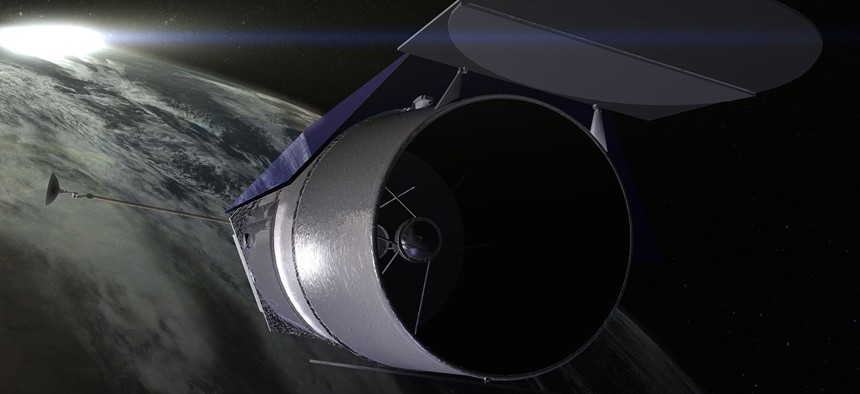
NASA's Goddard Space Flight Center/CI Lab
NASA’s New Telescope Will Have a View 100 Times Bigger Than Hubble’s
Are we alone in the universe? What is dark energy? The WFIRST telescope aims to answer both of these questions.
Are we alone in the universe? What is dark energy? These are two of the biggest mysteries of our universe, and NASA’s new space telescope hopes to answer them both.
The US space agency announced yesterday (Feb. 18) that its Wide Field Infrared Survey Telescope (WFIRST)—originally just a study— will move forward into project phase . WFIRST will have the same precision and power of the Hubble Space Telescope, but with a field of view 100 times greater. It can capture millions of galaxies in a single image. Try wrapping your head around that.
In a press release, NASA outlined WFIRST’s two main tasks: to answer “fundamental questions about the structure and evolution of the universe,” and to “expand our knowledge of planets beyond our solar system.”
By investigating the former, NASA hopes to learn about a mysterious force in our universe called dark energy. For decades, scientists theorized that the universe—which had been expanding since the Big Bang—would eventually decelerate. In the 1990s, though, astronomers discovered that the expansion of the universe wasn’t slowing down at all—it was accelerating. Today, it’s believed that some unknown, “dark” type of energy is responsible for speeding up the universe’s expansion rate.
WFIRST will measure the distances of thousands of supernovae, which can help NASA map how the universe is expanding. It will also examine the positions and shapes of millions of galaxies in order to track nearby dark matter—the invisible matter that makes up most of the “stuff” in the universe.
The telescope’s other mission is to research exoplanets. WFIRST will employ a coronagraph instrument , which can allow astronomers to photograph dim planets near bright stars. In doing so, we can learn a lot about the chemical makeup of the atmospheres of planets beyond our solar system. And that, of course, can tell us whether or not a planet is potentially habitable.
While NASA works on WFIRST, it will launch two other major space observatories. The Transiting Exoplanet Survey Satellite (TESS) will launch in 2017 with the sole purpose of finding and studying new planets. Then, the James Webb Space Telescope (JWST), the successor to the Hubble Telescope, will finally launch in 2018 after a series of delays and budget adjustments (originally budgeted for less than $2 billion, it eventually ballooned to $8 billion). JWST will observe some of the most distant objects in the universe to learn more about how it formed and how we got here.
NASA is hoping that WFIRST won’t suffer the same problems getting off the ground that JWST did. For now, WFIRST is expected to launch in the mid-2020s. It’s estimated to cost around $2 billion —for some, a small price to pay for the chance to unravel the greatest mysteries of the cosmos.






